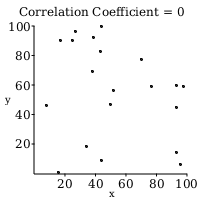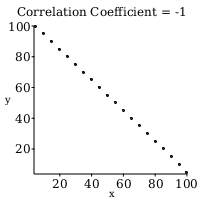The Pearson Product-Moment Correlation Coefficient (also known as r) is a value that measures the correlation between two variables and .
The coefficient value ranges from to , where a positive value represents a positive correlation, a value of represents no correlation and a negative value represents a negative correlation.
Values of ± are considered total correlations and only occur when all of the data points lie on a straight line.
Data sets with values of r near 0 are considered to have weak correlations, while data sets with values of r near or are considered to have strong correlations.



